#new liturgies
Text
I'm thinking about the story of Jesus and Peter walking on the water, which we read this past Sunday (Matthew 14). Growing up I learned it as a cautionary tale. I don't know if I was actually taught this or if it's just how I read it but. Don't be like Peter; don't start wavering once you've made your declaration of faith, or else you will begin to sink. Looking at this story now, it has so much more hope. First of all, he is the only one to get out of the boat. The others can't even move against their fear, and eventually Peter will be rewarded for this boldness. And once he is out on the water, amidst impossible circumstances, he begins to doubt. But Christ pulls him up again. Before he chides Peter, he pulls him to the surface. Then I imagine him chuckling and saying, "Oh Peter. You have no reason to fear, for I am always here." This story does not say "strangle your doubts unless you want to drown." It says that when we find ourselves in situations that we can't believe and naturally begin to doubt, Christ will be there to catch us. It is not your job, or indeed within your ability, to control your faith. Instead, as it changes, know that Christ is there with you, to scoop you back up. Lean not on your own understanding, do not make the sturdiness of your faith an idol. Instead, remember how much a small, mustard sized faith can do, and keep walking.
#autumn preaches#liturgy#liturgical calendar#new liturgies#st peter#jesus#christ#walking on water#theology#gospel#queer christians#godblr#religion#endless grace
186 notes
·
View notes
Text


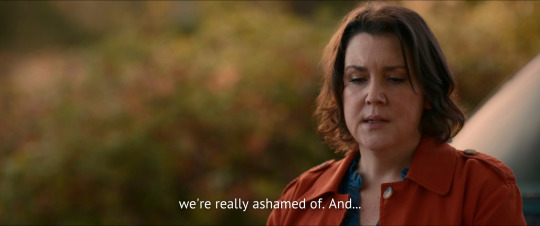




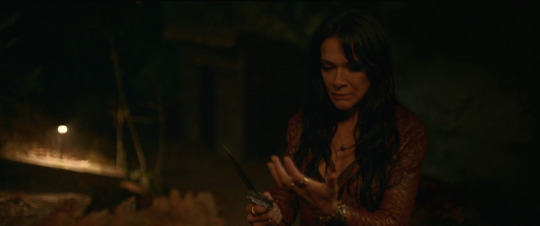
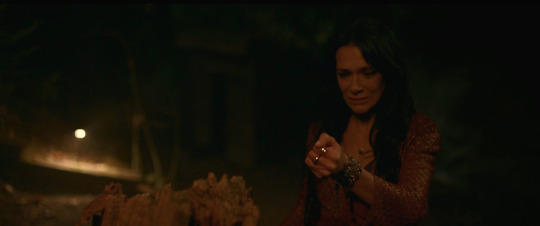

2x04, Old Wounds
#yellowjackets#yellowjackets spoilers#yellowjackets meta#lottie matthews#shauna shipman#im too lazy to get a download of the new episodes or to gif this so this is what we get!!! but i feel CRAZY about it#bc also like. the implication of callie being equivalent to It#shauna begs to callie and lottie begs to Whatever She Begs To#callie as the emblem of shauna's future she is what she is pouring herself into but callie is also inextricably tied#to shauna's past. the daughter jackie should have had. another earthly presence that jackie is haunting#and lottie's whole thing being like. ive moved on from that now. im free now. im better now.#the past rising up to grab her in the place where she meant to make her future but which really is like.#a monument to her past in every possible way#also the idea of words and blood being equivalent sacrifices#shauna kills jackie with words.#also im thinking about like within the torah how when they transition from the temple days to the rabbinic era#how prayer genuinely takes the place of what would have before been animal sacrifices#liturgy as bloodspilling.... it wants blood.....#callie wants blood as in she wants the fullness of her parenst she wants them to see her and trust her...#im spiralling!!!#SHAUNALOTTIE!!!!!!!!!!!!!!
134 notes
·
View notes
Text

"The Opus Dei should be an experience of the presence of God, in which we realize God is present for us, at the same time that we are in God’s presence and living for him. This idea of being simultaneously present to each other–God to us and we to God–is the heart of our life of prayer."
~From In The Presence of God, Monastery of Christ in the Desert
#Liturgy of the Hours#Opus Dei#Christian#prayers#presence of God#God is present for us#We live for God#Monastery of Christ in the Desert#Abiquiu New Mexico
52 notes
·
View notes
Text
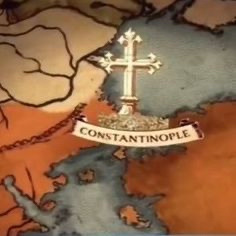
#constantinople#2024#ww3#world war three#greek orthodox capital#worldwide commerce#worldwide new beginning#ayia sophia once again will have liturgy#world prophecy now#battle of armageddon#last worldwide greek empire to begin soon#greece wil rise first after ww3
5 notes
·
View notes
Photo
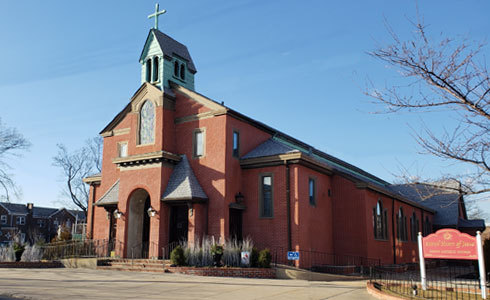
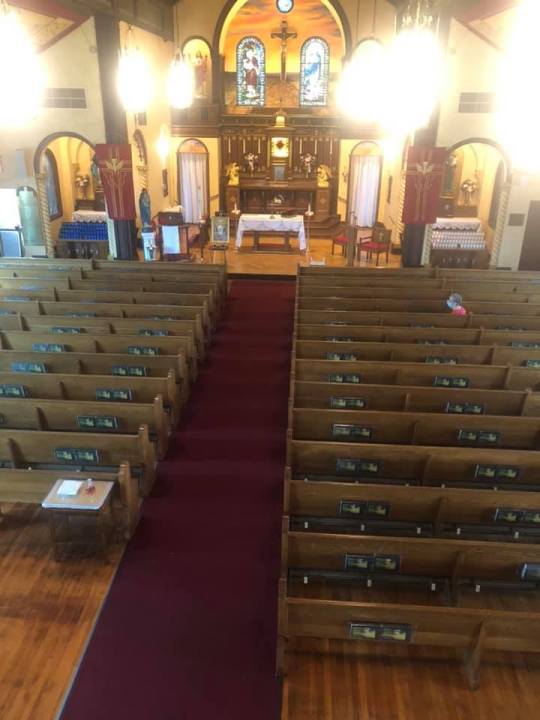
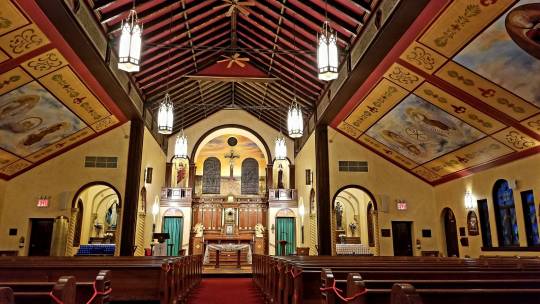
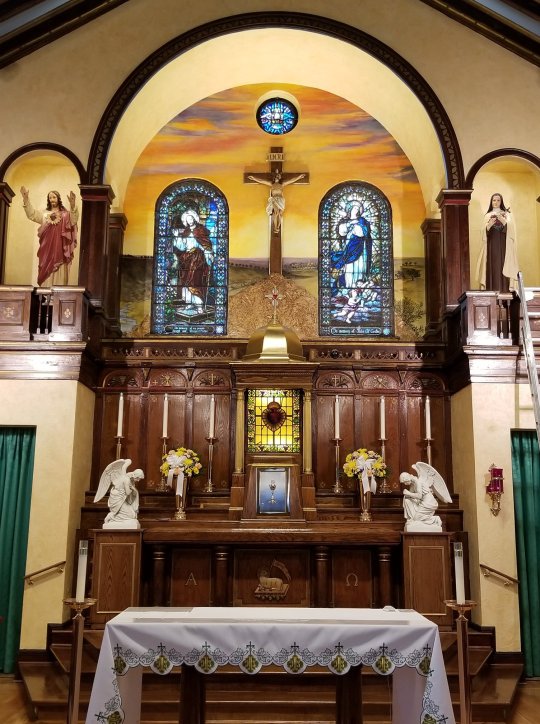
Sacred Heart Church, Glendale, NYC
(Source, Source)
Deus, qui nobis supérnam Ierúsalem
per temporále Ecclésiæ tuæ signum adumbráre voluísti,
da, quǽsumus, ut, huius participatióne sacraménti,
nos tuae grátiæ templum effícias,
et habitatiónem glóriæ tuæ íngredi concédas.
Per Christum.
O God, who chose to foreshadow for us
the heavenly Jerusalem
through the sign of Your Church on earth,
grant, we pray,
that, by our partaking of this Sacrament,
we may be made the temple of Your grace
and may enter the dwelling place of Your glory.
Through Christ our Lord.
Prayer After Communion, for the Feast of the Dedication of the Lateran Basilica
19 notes
·
View notes
Note
What was the best part of your Christmas?
I actually really didn’t do much for Christmas this year because of the weather. Christmas Eve we had a small gathering of those who could make it, but most couldn’t because the roads were bad. Christmas Day, weather hit bad AGAIN so we didn’t do ANYTHING. And I was dog sitting for a friend this weekend while they were gone visiting family, and since it was snowing and I knew there was a decent chance I wouldn’t be able to get back there in the evenings because of the roads, I just stayed at their house. So I spent Christmas Day at my friends house alone with her pets lol. But I watched a Christmas Eve and Christmas Day service on Facebook from one of my Twitter mutuals church — and having people like that in my life, even if only online, who will help me with my faith and pray for me is another thing I’m so incredibly thankful for!
And then Monday another few of us had supper at grandmas.
But this weekend both my brothers are coming home so we’ll have our small little Christmas gathering at my parents this weekend! Hopefully the weather holds out.
But thank you for asking, and I hope you had a very merry christmas!
#I’ve been in a really weird place theologically the past couple months#and watching that friends church every week to supplement my own church#has been such a blessing. so that really was a breath of fresh air on Christmas.#i didn’t realize how much I missed that liturgy and long for it.#i haven’t been to a strictly liturgical church like that since I was about 10 and I can still roll the corporate confession off my tongue.#hopefully this time next year I will be in a church like rhat.#so yeah that honestly was a highlight watching those Christmas services.#oh and also. besides that.#i took out the front of my car on my friends garage Christmas morning#their garage is fine but my car took total impact#and the cost to fix is more than the car is worth#so now I gotta buy a new vehicle. merry Christmas to me 🥳#but yeah this Christmas was probably the weirdest and worst one of my life.#but like… it still honestly wasn’t bad? if that makes sense? i don’t feel miserable about it lol#there’s still definitely plenty of cheer and much to look forward to :)
11 notes
·
View notes
Text
The mouth of the just man utters wisdom,
and his tongue tells forth what is right.
The law of his God is in his heart (E.T. alleluia).
(Ps 37 [36]:30–31)
– second Entrance Antiphon option for the Common of Holy Men and Women: II. For Monks and Religious A. For an Abbot
#antiphon appreciation post#seeing how the lone NT option is doing numbers out amongst the Protestants is making me feel justified in ensuring the RM citation on ALL#these are CATHOLIC antiphons#y'all can enjoy them but we weave them deeply into our liturgy#we invented web-weaving. what do you think antiphons and psalms and sequences are for.#we say 'is anyone going to draw out deep parallels between separate books of the Bible and some writings of the Church Fathers'#and then don't wait for an answer#and then every single day* is something new and exciting#*okay weekdays in ordinary time are almost all the same.
6 notes
·
View notes
Photo
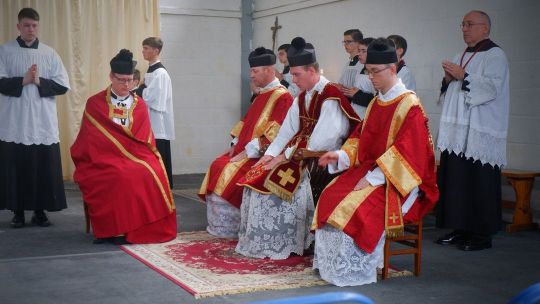
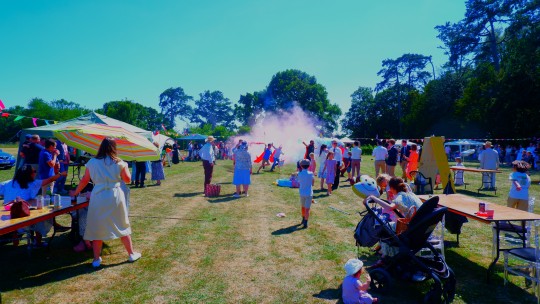
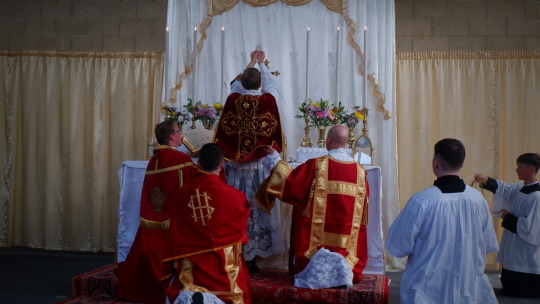

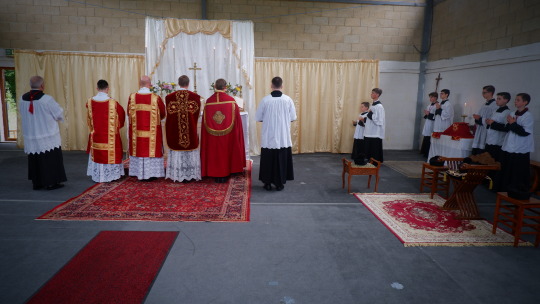
A day of looking forward at the SSPX community of St Michael's School, as Fr Rupert Bevan celebrated his First Mass (on the Feast of Sts John Fisher & Thomas Moore), followed by the blessing of the cornerstone of the new chapel of St Michael the Archangel which is being built to serve the growing community of faithful who have congregated around the school. The annual summer fayre finished the afternoon, raising funds for this uniquely special school. While the environment of the school gym wasn't exactly the most uplifting place for the Tradentine Liturgy, it was still an occasion of great joy & beauty, and one that reminds us that no matter how much the big wide world sets itself at enmity with those seeking to believe & practise the Catholic Faith as it has always been believed & practised, we still believe that the SSPX is a work of God, and that as long as He desires it to continue, He will ordain the circumstances such that it will do so. This was most especially brought home by the Benedictine priests formerly resident at Glastonbury until the release of Traditiones Custodes last year, upon which Bishop Declan of the Diocese of Clifton chose to restrict their use of the Traditional Latin Mass, which they had dedicated themselves to saying exclusively. They have now become affiliated with the SSPX, but continuing their way of life as Benedictines. https://www.instagram.com/p/Cfz1RuJD23U/?igshid=NGJjMDIxMWI=
#traditional catholic#catholic priest#sspx#St Michael#new church#Catholic Liturgy#construction#Catholic life#school fayre#summer fayre#community#Catholic community#Catholic school#Mass#Traditional Latin Mass
7 notes
·
View notes
Text
Speaking of the Western Rite, I found out there’s a Western Rite parish a few minutes from here, and they do Mass on Wednesday evenings. I kind of want to go check it out.
#I figure it wouldn’t hurt to see what it’s like#the whole ‘’Western Rite’’ thing is apparently a new experiment in the Orthodox Church#trying to revive a liturgy that’s culturally relevant to westerners in the Church#since that cultural influence got lost after the Schism
2 notes
·
View notes
Photo
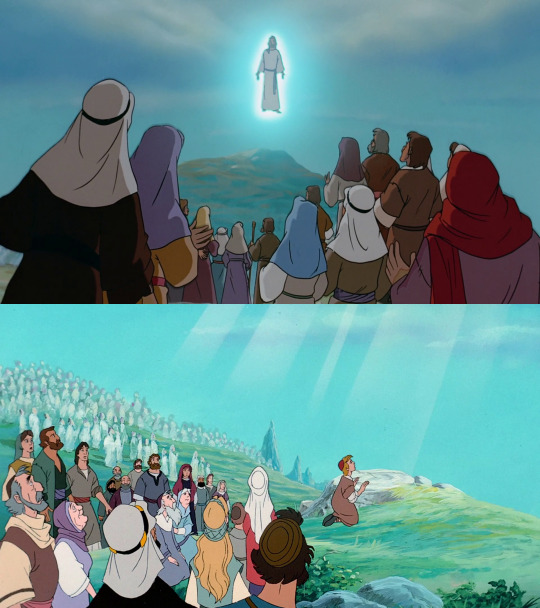
Today, the Roman Catholic Church celebrates the Solemnity of the Ascension of the Lord. This event is included with the Holy Rosary as the Second Glorious Mystery.
That glorious event when the Risen Christ goes up to heaven to take His place at the right hand of the Father. In His exaltation, Christ receives sovereign authority and power over creation and all history.
Today also marks the celebration of World Communications Sunday. May we recognize ourselves as members of the one body of Christ, and see each other not as competitors, but as persons.
"Lord Jesus, You ascended into heaven; send us the promise the Father,
that we may be clothed with power from on high.
Your disciples were to be as wise as serpents and as simple as doves,
through Your Spirit teach us prudence and simplicity.
You are seated at the right hand of the Father, pray for us as our Priest,
and pray for us as our Head.
Grant that in every trial we may suffer with You,
and so be glorified with You."
-excerpt from the Liturgy of the Hours
#catholic#nest entertainment#animated stories from the new testament#solemnity#ascension of christ#holy rosary#second glorious mystery#world communications sunday#liturgy of the hours
3 notes
·
View notes
Text
The Liturgy in the New Testament

Christ is Risen! Truly He is Risen!
A couple of months ago I went to my first Bible Study at my local parish. While the Bible Study was on the Book of Revelation, my priest briefly talked about how the Liturgy was present in the New Testament Church. This topic was interesting to me because today, outside of the Orthodox Church, I see all sorts of different worship styles. And so, I want to explore how the liturgy was practiced by the early church.
~~~~~~~~~~~~~~~~~~~~~~~~~~~~~~~~~~~~
Prior to the New Testament, there was liturgical worship in Israel. After Moses was given the Ten Commandments, God instructed him and the Jews to build an altar (Ex. 20:24-26). He also gave instructions on keeping the Sabbath (Ex. 23:10-13), the annual feasts (Ex. 23:14-19), and on different offerings and furnishings in the sanctuary (Ex. 25:1-40).
There are also instances of heavenly worship revealed in the Bible. In Isaiah 6:1-8, we see the angels worshipping God and in Revelation 4, we see heaven’s liturgy.
One thing that people sometimes forget is that Jesus and his apostles were Jews. The first Christians were Jews. They worshipped the same way the rest of the Jewish nation did, which was the tradition passed down since Moses and the Prophets. There are no doubts that Judaism has a liturgy, however, they doubt that Christianity does.
There are two key things that we have to understand in order to understand the liturgy in the New Testament. The first is to understand that in the Orthodox Church, the Lord Jesus Christ is our High Priest. And as our High Priest, He inaugurates the New Covenant and is “a priest forever” (Heb. 7:17, 21). As a priest, Christ serves liturgically, and by using the word “forever”, Paul suggests that He is serving continually in the heavenly tabernacle. Jesus is also called a liturgist in Hebrews 8:1-2: “Now this is the main point of the things we are saying: We have such a High Priest, who is seated at the right hand of the throne of the Majesty in the heavens, a Minister of the sanctuary and of the true tabernacle which the Lord erected, and not man.” In Greek, the word minister translates to “leitourgos” or “liturgist”. In order for Christian worship to be fully Christian, it must mirror the worship of Christ in heaven.
Christ also serves as the “Mediator of a better covenant” (Heb. 8:6). Similar to how the sacrifices in the Old Testament prefigured Christ’s sacrifice, the Eucharistic Feast also brings us to the fullness of the New Covenant offering, which was completed at the Cross and fulfilled in the Resurrection. Christ as the High Priest’s once for all offering of Himself (Heb. 7:27) at the heavenly altar is an offering we participate in during the Divine Liturgy.
The second thing that we have to understand is that the New Testament was written with the framework that “the early Church would meet in the Temple and Synagogue and put Christ in the center of what they did as Jews” ("Liturgical Worship in the New Testament”). When Christ died, He fulfilled the Law, not destroy it (Matt. 5:17). The Old Testament was “a type and shadow of the New as Hebrews teaches” ("Liturgical Worship in the New Testament”). So, the first Christians worshipped according to the pattern of the Law, but they viewed the worship as being directed to and fulfilled in Christ ("Liturgical Worship in the New Testament ).
There are numerous scriptural references of liturgy in the New Testament.Here are some of the references:
Acts 2:42 - in Greek is literally “the prayers”, referring to specific liturgical prayers.
Acts 5:42 - the apostles were continually in the Temple praying and teaching.
Acts 6:4 - the apostles appoint deacons so that they can devote themselves to “the prayers” and to the ministry of the word.
Acts 10:2-3 - Cornelius prayed continually and saw a vision at the 9th hour of the day (3 o’clock). In 10:9, Peter was praying at the 6th hour (noon). These times were all “liturgical hours of prayer”.
Acts 13:2 - As the apostles were “ministering” to the Lord, (literally, “as they were in the liturgy of the Lord”) and were fasting, the Holy Spirit came to them. The Holy Spirit said, “Now separate to Me Barnabas and Saul...” In this passage, we learn that these two apostles were called by God during worship and that the Holy Spirit speaks in a liturgical setting.
Acts 15:22,18:8,17 - the “leaders” mentioned are leaders of the synagogue, which were liturgical worship leaders.
Acts 18:7 - the “Worshipper of God”’s house was next to the synagogue.
Acts 16:25 - “After the Days of Unleavened Bread, Pentecost are mentioned. Paul says in 1 Cor. 16:8 that he will stay in Ephesus until Pentecost. The early Church kept a liturgical ‘church calendar’” ("Liturgical Worship in the New Testament”).
Acts 20:7 - Communion was held each Sunday.
Romans 16:16 - While a kiss of greeting was common during this time, the “holy kiss” was an element of Christian liturgy that signified that the people of God were reconciled to one another. This way, they could receive the Body and Blood of Christ in peace.
Ephesians 5:14 - This is an ancient baptismal hymn. Other preexisting hymns include 1 Tim. 3:16 and 2 Tim. 2:11-13.
Hebrews 8:2 - High Priest Jesus is a “minister” in the heavenly sanctuary.
Hebrews 13:10 - Paul states that they have an altar.
Revelations 1:10 - Many people believe that John saw his vision of Christ during the Sunday liturgy, because the Lord appeared to him “in the midst of the seven lampstands” (Rev. 1:13). Lampstands were found in the Christian sanctuary just like they were found in the Hebrew temple.
Even within the Early Fathers of the Church we find testimony of the Old Testament custom informing the liturgical life of the Church. And in the New Testament the Apostles still attended the Temple worship at the prescribed hours. Clement of Alexandria testifies that there were people who prayed at the 3rd, 6th, and 9th hours, and that there were people who prayed all the time (Clement). It was also custom to pray at sunrise and sunset (Clement). Tertullian mentions that the only command that while the only command we were given was that we should pray all the time, it was customary to offer prayer at the 3rd, 6th, and 9th hours, since Scripture deemed these more solemn than the rest (Tertullian).
The Divine Liturgy that we use today (Liturgy of St. John Chrysostom) is also filled with direct quotes or allusions to the Scripture. Depending on the readings for the day, on any Sunday the Matins and Liturgy will contain between 400-500 verses of Scripture ("Liturgical Worship in the New Testament”). One of the most notable ones is the Sanctus prayer, which has its origin in Isaiah 6:3.
~~~~~~~~~~~~~~~~~~~~~~~~~~~~~~~~~~~~
It’s so interesting to me that the early Church was a liturgical church. Growing up in the Orthodox church, I never fully appreciated the Divine Liturgy and the different church services. I used to think it was boring and something I was just forced to go to. When I went to my first Protestant service, I was genuinely shocked at how different it was. I’ve seen all sorts of services, but each time I went with my friends, something just felt off. Even when I didn’t fully understand the church, I felt as if something was wrong. So learning about how the early Church was a liturgical church helped me appreciate the Divine Liturgy a lot more. I feel like I’m actively worshipping like the early Christians did and worshipping like Christ did. I feel more connected to the Church and no longer feel like Divine Liturgy is just something I’m forced to go to.
May God bless you all and until next time!
- Joanna
~~~~~~~~~~~~~~~~~~~~~~~~~~~~~~~~~~~~
Sources:
Clement. “The Stromata, Book VII.” Early Christian Writings, http://www.earlychristianwritings.com/text/clement-stromata-book7.html.
“Liturgical Worship in the New Testament” Our Life in Christ from Ancient Faith Ministries, 29 November 2004, https://www.ancientfaith.com/podcasts/ourlife/liturgical_worship_in_the_new_testament
Tertullian. On Prayer. https://documentacatholicaomnia.eu/03d/0160-0220,_Tertullianus,_Adversus_Omnes_Haereses_%5bSpuria%5d_%5bSchaff%5d,_EN.pdf.
#eastern orthodoxy#eastern orthodox#divine liturgy#greek orthodox#Early Church#New Testament#Old Testament#Church Fathers#article
5 notes
·
View notes
Text
These days, my most common prayers are "help me to be Your hands on earth" and "teach me to walk humbly so that I can be a vessel for Your love"
#new liturgies#recited prayers and mantras are nice#its all about the love#godblr#prayers#autumn preaches
43 notes
·
View notes
Text
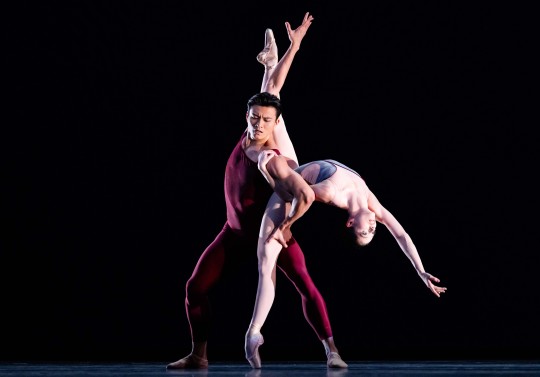
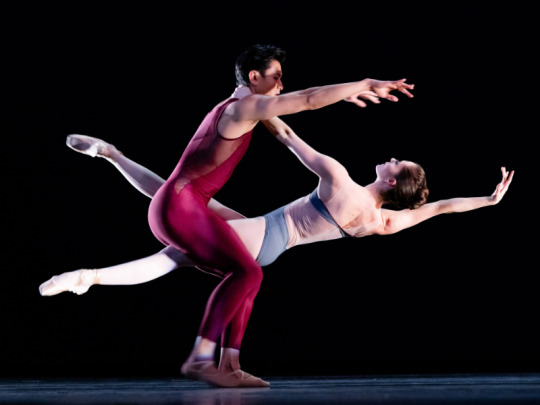
Chun Wai Chan and Unity Phelan in Christopher Wheeldon's Liturgy (New York City Ballet)
Photos by Kyle Flubacker
0 notes
Text
The Ballad of Original Trauma
(best music for listening is anything by Hexsystem)

Based on all of the creation myths I've heard and liked. Triangle is from an amazing painting of pythagoras. Part of a tome of lore on mermaids I've been developing for years.
#art#artwork#esoteric#occult#liturgy band#mermaid#creative writing#christianity#gnosticism#gnosis#transcendental mythology#transcendental surrealism#Youtube#new age
0 notes
Text
“I am no longer my own, but thine.
Put me to what thou wilt, rank me with whom thou wilt.
Put me to doing, put me to suffering.
Let me be employed by thee or laid aside for thee,
exalted for thee or brought low for thee.
Let me be full, let me be empty.
Let me have all things, let me have nothing.
I freely and heartily yield all things
to thy pleasure and disposal.
And now, O glorious and blessed God,
Father, Son, and Holy Spirit,
thou art mine, and I am thine. So be it.
And the covenant which I have made on earth,
let it be ratified in heaven. Amen.”
John Wesley's Covenant Prayer, used throughout the Methodist churches, especially at the start of a new year.
1 note
·
View note
Photo
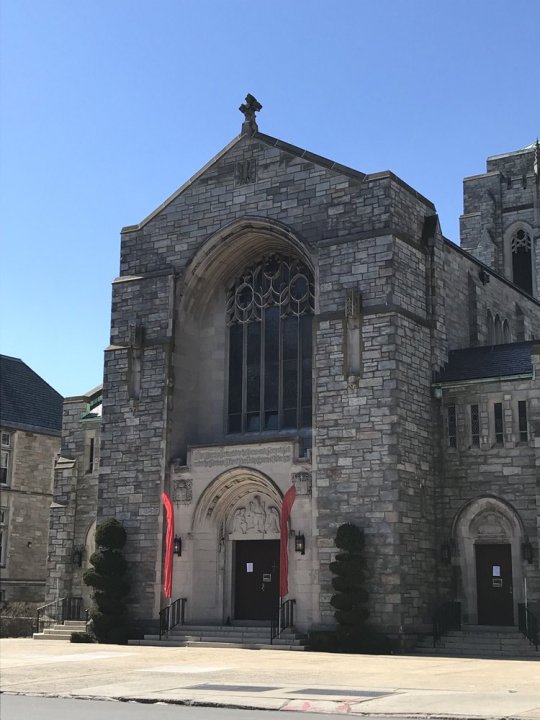
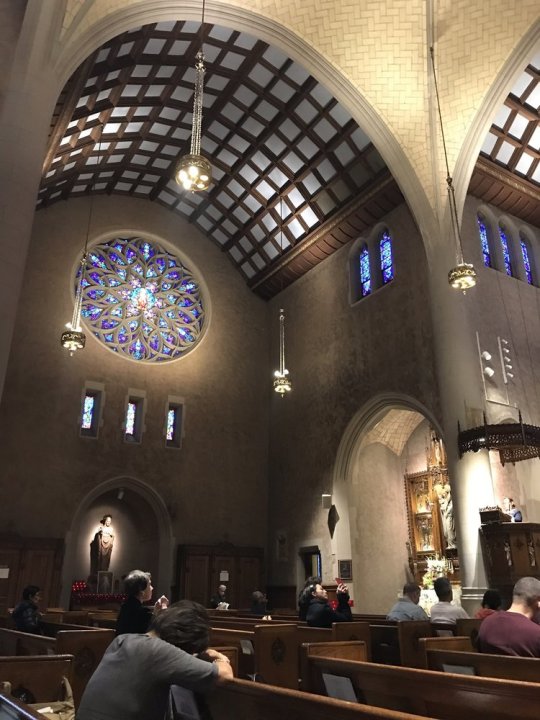
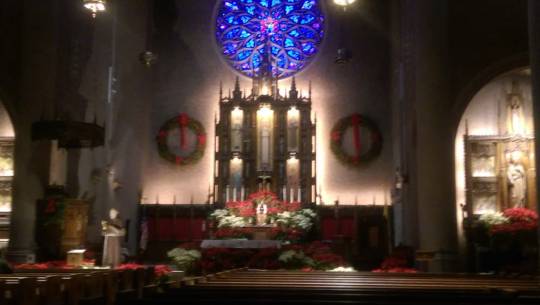

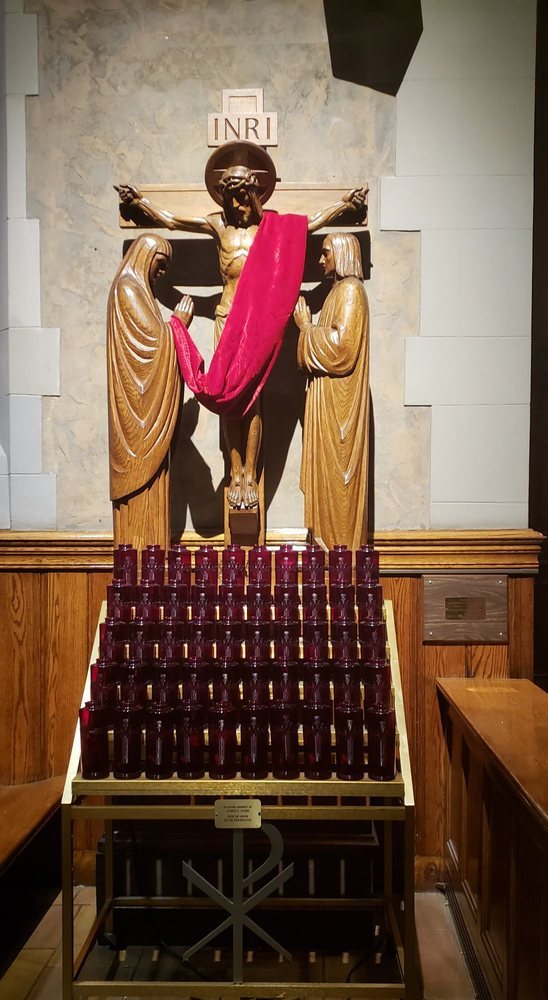
Images of Our Lady Queen of Martyrs Church, Forest Hills, NYC
(Source)
Qui domum oratiónis muníficus inhabitáre dignáris,
ut, grátia tua perpétuis fovénte subsídiis,
templum Spíritus Sancti ipse nos perfícias,
acceptábilis vitæ splendóre corúscans.
For in Your benevolence You are pleased
to dwell in this house of prayer
in order to perfect us as the temple of the Holy Spirit,
supported by the perpetual help of Your grace
and resplendent with the glory of a life acceptable to You.
Sed et visibílibus ædifíciis adumbrátam,
Christi sponsam Ecclésiam perénni operatióne sanctíficas,
ut, innumerábili prole mater exsúltans,
in glóriam tuam collocétur in cælis.
Year by year You sanctify the Church, the Bride of Christ,
foreshadowed in visible buildings,
so that, rejoicing as the Mother of countless children,
She may be given Her place in Your heavenly glory.
excerpt from the Preface prayer for the Feast of the Dedication of the Lateran Basilica
4 notes
·
View notes